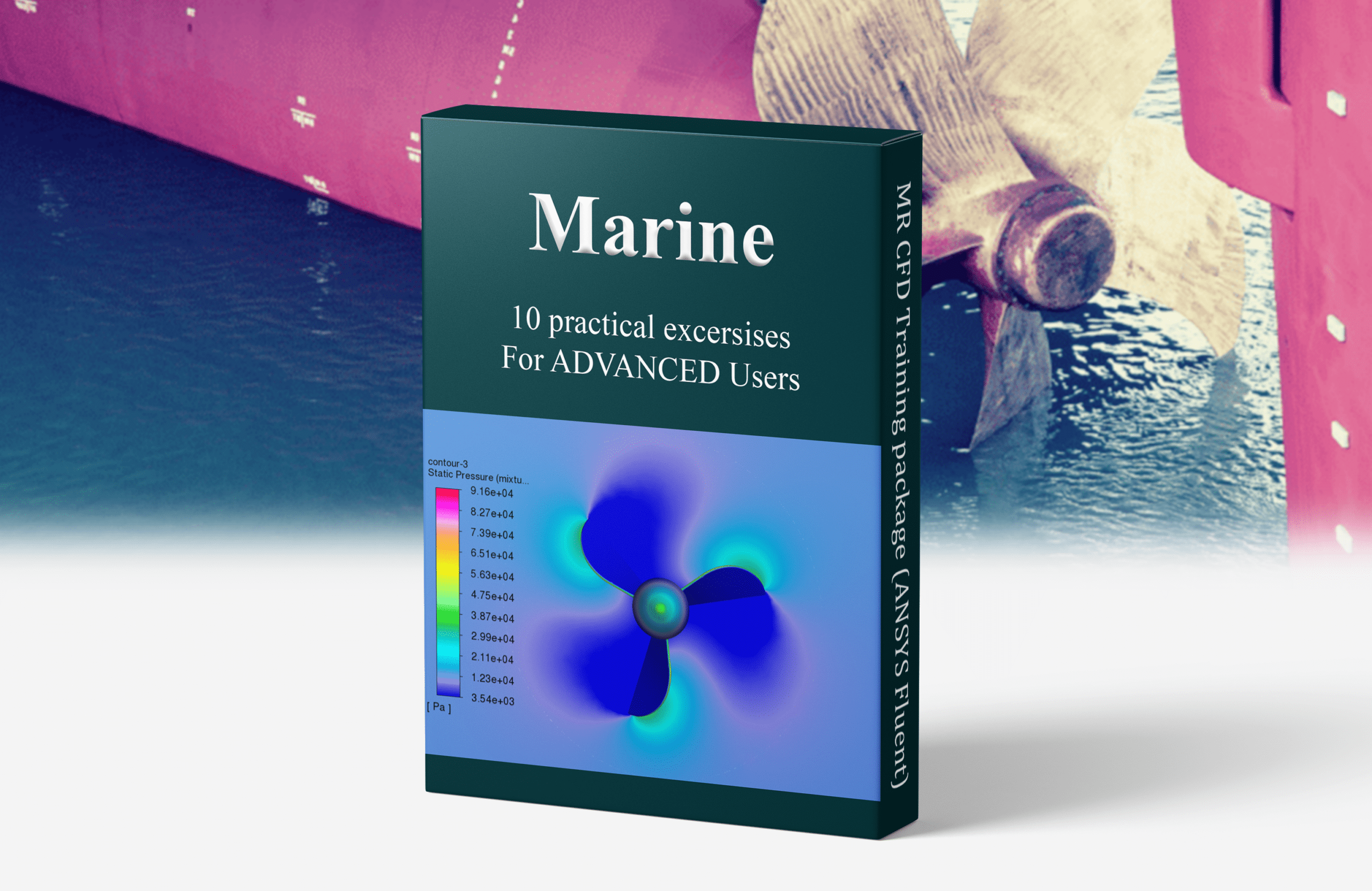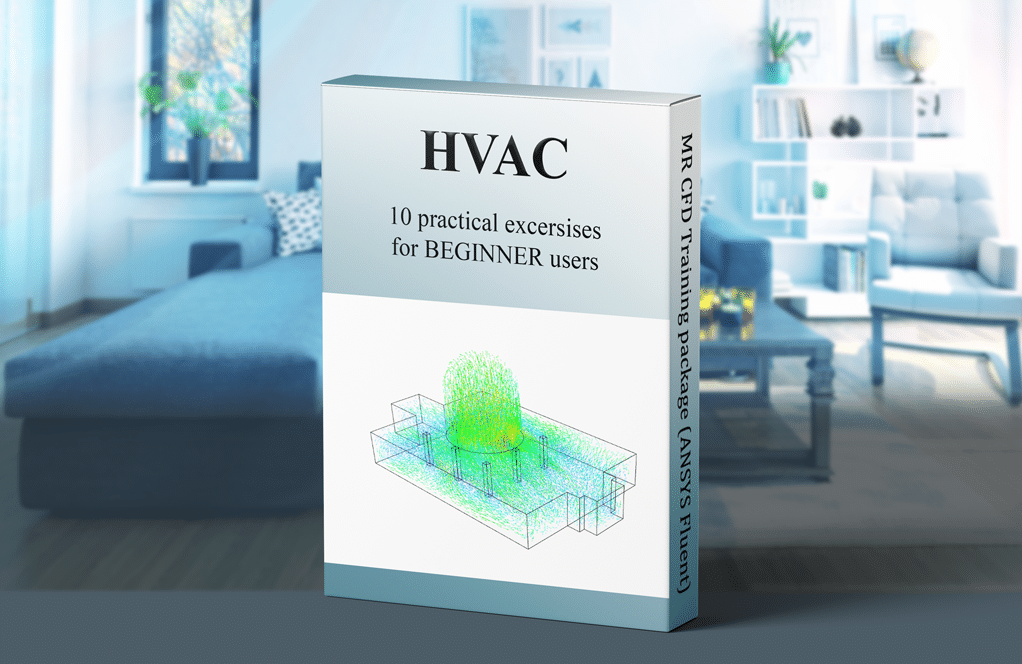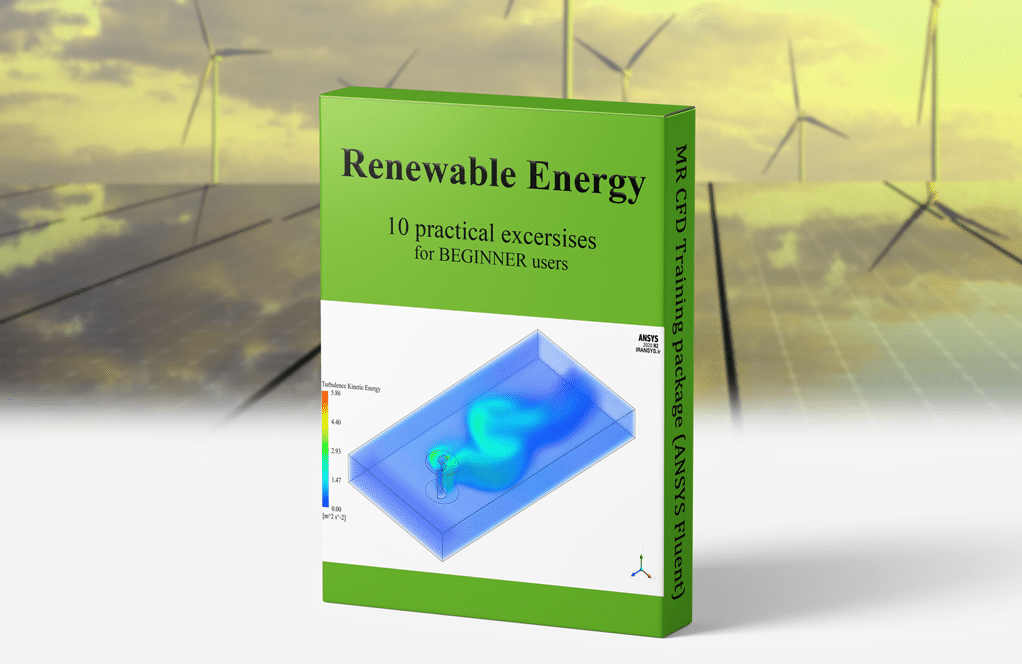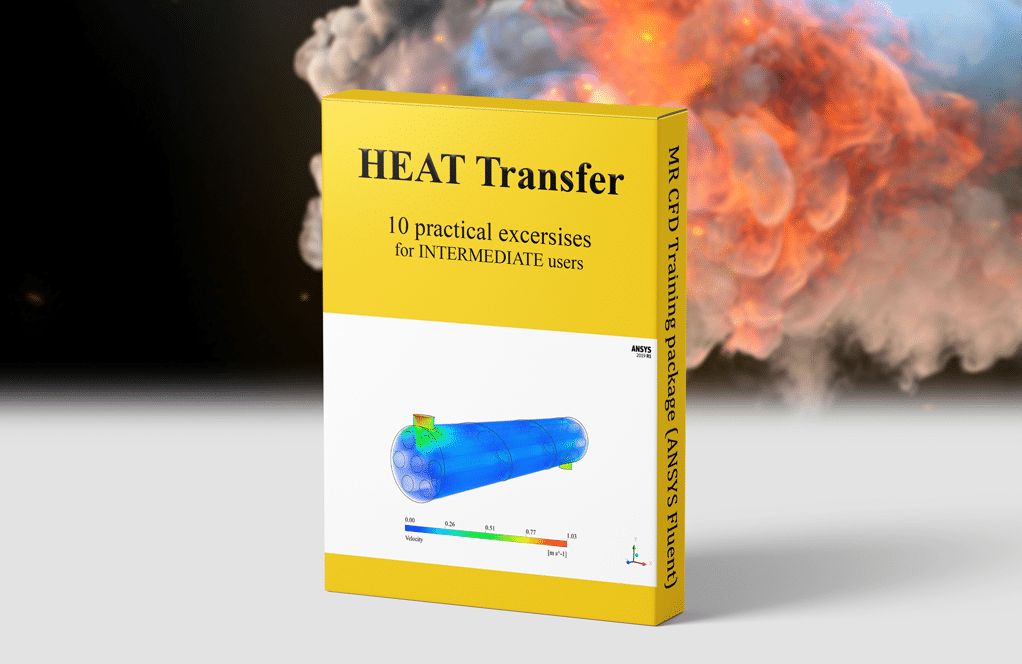Marine Engineering CFD Training Package for Advanced, 10 Learning Products
Original price was: $2,520.00.$280.00Current price is: $280.00. Student Discount
- Horizontal Axis Water Turbine
- Turbine Hydropower Optimization
- Fish Cage
- Self-Propelled Submarine Motion (6-DOF & 1-DOF)
- Floating Vessel Motion
- Oscillatory Wave
- Sloshing Tank
- Submarine Design Optimization (RBF)
- Boat Propeller Cavitation
To Order Your Project or benefit from a CFD consultation, contact our experts via email ([email protected]), online support tab, or WhatsApp at +44 7443 197273.
There are some Free Products to check our service quality.
If you want the training video in another language instead of English, ask it via [email protected] after you buy the product.
Description
Marine Engineering CFD Simulation Training Package by ANSYS Fluent, 10 Practical Exercises For Advanced Users
This Training Package includes 10 practical exercises that are numerically simulated by ANSYS Fluent software for ADVANCED users in the field of Marine engineering.
Introduction
Computational fluid dynamics, or CFD, is a powerful tool used in naval engineering to simulate fluid movement and other related processes. CFD software like ANSYS Fluent is used by a lot of people and is great for simulating naval engineering. This training package has 10 practical tasks for advanced users who want to use ANSYS Fluent to take their CFD modeling skills in marine engineering to the next level.
Advanced Meshing Techniques
This task is all about advanced meshing methods used in naval engineering. Participants will learn how to use mixed meshing methods to make high-quality models and how to improve mesh quality.
Advanced Turbulence Modeling
This activity goes over more complex ways to model turbulence, such as large eddy simulation (LES) and separated eddy simulation. (DES). Participants will learn how to choose the right turbulence model for a given marine engineering application.
Advanced Multiphase Flows
This practice goes over advanced ways to simulate multiphase flows in marine engineering, such as free surface flows and two-phase flows with heat transfer.
Advanced Wave Loads
This exercise focuses on more advanced ways to simulate wave loads on offshore buildings, such as modeling waves that don’t move in a straight line and figuring out what happens when a wave breaks.
Advanced Ship Hydrodynamics
This practice goes over more advanced ways to simulate ship hydrodynamics, such as how to simulate ship waves and how ship motion affects fluid flow.
Advanced Fluid-Structure Interaction
This practice goes over advanced methods for studying how fluids and structures interact in marine engineering, such as simulating how fluids and structures interact in complex geometries.
Advanced Optimization
This practice works on advanced optimization techniques for marine engineering models, such as the use of adjoint methods and surrogate modeling.
Advanced Post-Processing
This practice shows how to use scripting and automation tools to analyze and display modeling data in a more advanced way.
High-Performance Computing
This activity goes over how to use high-performance computing (HPC) for models in marine engineering, including how to use parallel computing and the cloud.
Real-World Applications
This exercise focuses on real-world applications of marine engineering, such as designing and optimizing ships and offshore structures and figuring out how fluids and structures interact in complex shapes.
Conclusion
This training package gives advanced users a full set of tasks for using ANSYS Fluent to do CFD simulations for marine engineering. Participants will learn a lot about advanced techniques and be able to use what they’ve learned to solve marine engineering problems in the real world.














Miss Nadia Prosacco Sr. –
I’ve worked my way through the Marine Engineering CFD Training Package and I’m truly impressed. The variety of exercises provided not only enhanced my skill in using ANSYS Fluent for complex marine simulations but also increased my understanding of the sophisticated phenomena entailed. Particularly, the real-world application exercises were both challenging and deeply informative, offering a kinetic learning experience I would undoubtedly recommend!
MR CFD Support –
Thank you so much for your positive feedback! We’re delighted to hear that our Marine Engineering CFD Training Package has been instrumental in advancing your skills with ANSYS Fluent and that you’ve found real value in the real-world application exercises. If you have any further inquiries or need additional support to continue enhancing your expertise, please don’t hesitate to reach out. Your success is our success, and we’re here to assist in any way we can. Thank you for recommending our training package, and we wish you all the best in your future marine engineering endeavors!
Meta Dicki –
I thoroughly enjoyed the Advanced Ship Hydrodynamics module—it’s truly unmatched! The hands-on tutorial for simulating ship waves was fantastically detailed, helping me understand the fluid dynamics around a moving vessel.
MR CFD Support –
Thank you for your kind words! It’s wonderful to hear you found our Advanced Ship Hydrodynamics module informative and practical. We strive to provide comprehensive learning experiences. Your success is our achievement.
Elliott Baumbach –
This package seems so comprehensive! It was an incredibly enriching experience to work through the exercises and strengthen my understanding of advanced marine CFD applications!
MR CFD Support –
Thank you for your positive feedback! We’re thrilled to hear that you found our Marine Engineering CFD Training Package for Advanced Users beneficial and that it helped enhance your CFD skills in marine applications.
Prof. Olaf Medhurst –
The Marine Engineering CFD Training Package for Advanced users seems to cover a broad range of essential skills. I’ve greatly improved my understanding of complex simulations, like advanced multiphase flows and FSI. The real-world application exercise was particularly enlightening, bridging theory with everyday maritime challenges.
MR CFD Support –
Thank you for your wonderful feedback! We’re thrilled to hear our Marine Engineering CFD Training Package has enhanced your simulation skills and provided valuable insights into real-world engineering scenarios. It’s great to know you found the multiphase flows and FSI content beneficial. We appreciate your review and are glad that our product met your advanced learning needs.
Sunny Gutkowski –
I just completed the ‘Marine Engineering CFD Training Package for Advanced’ and the experience was incredible! The practical exercises were challenging and vastly expanded my knowledge in CFD applications using ANSYS Fluent. Especially the training on advanced multiphase flows changed how I approach complex problems.
MR CFD Support –
Thank you for your great feedback! We’re thrilled to hear that our ‘Marine Engineering CFD Training Package for Advanced’ provided you with an enriching learning experience. It’s fantastic to learn that the advanced multiphase flows section had such a positive impact on your approach to complex CFD problems. We appreciate your time in complementing our product and hope you’ll find our other offerings just as beneficial.
Tommie Luettgen –
I just wanted to express how grateful I am for the Marine Engineering CFD Training Package. The advanced exercises greatly enhanced my understanding of complex CFD applications in marine engineering. The high-quality tasks and the in-depth nature of turbulence and multiphase flow simulations provided invaluable insights. Looking forward to applying these new skills to real-world problems.
MR CFD Support –
Thank you so much for your kind words! We’re thrilled to hear that our Marine Engineering CFD Training Package for advanced learners has helped you deepen your knowledge of CFD applications. It’s great to know that you found the exercises and simulations valuable. Your enthusiasm for taking these skills to tackle real-world engineering problems is exactly what we aim for. If there’s anything else we can help you with, please let us know!
Nolan Quitzon –
This Marine Engineering package has been incredibly insightful. The range of topics covered, from turbulence to multiphase flows, provided me with a comprehensive understanding of challenging marine scenarios. The content is quite sophisticated but manageable, thanks to the thorough explanations. Well delivered and highly recommended for professionals in the field!
MR CFD Support –
Thank you so much for your kind words! We are delighted to hear the Marine Engineering CFD Training Package met your need for comprehensive and advanced learning materials. We appreciate your recommendation and are pleased to know our efforts to provide a valuable resource for marine engineering professionals like yourself have been successful. If there’s anything more we can assist you with, please let us know!
Dr. Nigel Hane –
I’m thoroughly impressed with the detailed content and structure provided in the Marine Engineering CFD Training Package for Advanced users. The comprehensive range of topics, from advanced meshing to high-performance computing, has significantly enhanced my understanding and skills in marine CFD analysis. Truly valuable for any serious engineering professional!
MR CFD Support –
We are thrilled to hear that you appreciate the depth and range of our Marine Engineering CFD Training Package. Thank you for sharing your positive experience. Our goal is always to provide valuable learning tools for our advanced users, enabling them to address complex marine engineering challenges efficiently. If you have any further feedback or need assistance as you continue to explore the package, please feel free to reach out!
Prof. Makayla Dickinson II –
Wow, this marine engineering package has completely exceeded my expectations! Each exercise provided me with in-depth knowledge of complex CFD concepts and ANSYS Fluent tools that are essential for realistic marine simulations. The advanced meshing techniques have particularly improved the accuracy of my work. Super grateful for such a comprehensive resource!
MR CFD Support –
Thank you for your positive feedback! We’re thrilled to hear that our Marine Engineering CFD Training Package met your expectations and that you found the advanced modules, especially meshing techniques, to be so valuable. It’s our goal to provide high-quality learning resources for our users, and we’re glad it has enhanced the accuracy of your simulations. Keep up the great work with your marine engineering projects!
Prof. Austyn Kulas –
Congratulations on the comprehensive marine engineering CFD training package – I’m a huge fan. The advanced techniques taught, especially in turbulence modeling and multiphase flows, have significantly improved my simulation accuracy for complex naval projects.
MR CFD Support –
Thank you so much for your kind words! We are thrilled to hear that our Marine Engineering CFD Training Package has enhanced your simulation capabilities. It’s our pleasure to assist our customers in mastering advanced CFD techniques and we look forward to supporting your future maritime projects.
Andres Gleichner –
I recently completed the Marine Engineering CFD Training Package for Advanced users, and I am thoroughly impressed with the extensive knowledge it offered. The step-by-step approach in practical exercises carved a clear path from the complex fundamentals to real-world applications. Highly recommend it for professionals looking to deepen their mastery in CFD applications for marine designs!
MR CFD Support –
Thank you for your enthusiastic feedback! We are thrilled to hear that you found the training package comprehensive and beneficial for your professional development. It’s our goal to provide practical, real-world knowledge that can be directly applied to industry challenges. We appreciate your recommendation and are glad you had a positive learning experience!
Charles Bartoletti IV –
I’ve used the Marine Engineering CFD Training Package, and I am truly impressed by the depth of knowledge offered. The blend of theory and hands-on practice with advanced techniques has substantially enhanced my CFD simulation skills in the field of marine engineering.
MR CFD Support –
Thank you deeply for your kind words. We’re thrilled that the package met your expectations and helped you advance your skills in marine engineering CFD simulations. It is always our goal to provide comprehensive and practical learning experiences that truly benefit our users. We appreciate you sharing your positive experience!
Ebony Satterfield –
I was thoroughly impressed with the advanced treatment and complexities covered in this marine engineering CFD training package. The range of topics, from advanced meshing techniques to the handling of real-world applications, truly caters to someone desiring to deepen their expertise in CFD analysis within the marine domain. The clear explanations and hands-on approach have undoubtedly enhanced my understanding of marine engineering simulations. Kudos to MR CFD Company for compiling such a comprehensive educational resource!
MR CFD Support –
Thank you for your positive feedback! We’re thrilled to hear that our Marine Engineering CFD Training Package met your advanced learning needs and helped you broaden your understanding of CFD in marine applications. Your satisfaction is our top priority, and we’re proud to deliver materials that practitioners find enriching and valuable. Keep an eye on MR CFD for more advanced training materials!
Prof. Scotty Sanford –
I’ve recently completed the Marine Engineering CFD Training Package for Advanced learners and I wanted to share how impactful it’s been. The balance between theory and practical exercises ensured a deep understanding of concepts which, paired with access to high-level computing resources and real-world applications, has been an incredible enhancer to my skill set. Particularly, the advanced optimization techniques opened up new possibilities in my marine engineering projects.
MR CFD Support –
We’re delighted to hear that you found the Marine Engineering CFD Training Package empowering and educationally enriching. It’s excellent to see our advanced users apply their acquired knowledge to real-world challenges, leveraging the powerful optimization techniques. Your feedback inspires us to keep providing high-quality learning material. Thank you for reviewing our product!
Denis Rodriguez –
This Advanced Marine Engineering CFD Training Package is purely a masterpiece! The content depth and detailed exercises offered engage in complex aspects of marine simulations genuinely honing my skills in ANSYS Fluent. The multiphase flows section particularly piqued my interest. Brilliant material for anyone serious about marine CFD advancements.
MR CFD Support –
Thank you for your excellent feedback! We are delighted to hear that the Advanced Marine Engineering CFD Training Package has been instrumental in developing your skills and that the multiphase flows section was especially beneficial. Your enthusiasm motivates us to continue delivering high-quality training materials. Keep exploring and learning!
Verla Wilkinson –
I recently completed the Marine Engineering CFD Training Package, and I have to say, the real-world application exercises really helped solidify my understanding of complex fluid-structure interactions. The inclusion of High-Performance Computing in the lessons also allowed me to run simulations much faster, which was extremely beneficial.
MR CFD Support –
Thank you so much for taking the time to share your experience with our Marine Engineering CFD Training Package! We’re thrilled to hear that you found the real-world application exercises valuable and that you were able to utilize High-Performance Computing effectively. Your feedback is immensely appreciated by our team, and we wish you continued success in applying these simulations in your marine engineering projects.
Mrs. Jada Krajcik –
The Marine Engineering CFD Training Package seems like an extensive resource for advanced simulation techniques. The range of topics covers the full spectrum of challenges in marine engineering CFD.
MR CFD Support –
Thank you for your kind words! We’re thrilled that you find the Marine Engineering CFD Training Package to be comprehensive and beneficial for mastering advanced simulation techniques. Your mastery of the various topics will certainly lend itself to tackling real-world CFD challenges. We continually aim to provide high-quality educational materials. If you or any colleagues have further inquiries, feel free to reach out!
Dana Fay –
The hinge connectors part of my FSI setup doesn’t seem to respond correctly after following exercise number 6. Any tips on how to troubleshoot this issue?
MR CFD Support –
In exercise 6, ensure that you’ve correctly defined the hinge connectors and the respective boundaries conditions for FSI setup. Check your mesh near the hinge point to make sure it’s fine enough to capture the detailed motion. Also, review the coupling settings between the fluid and structural models and make adjustments if necessary. If the issue persists, you may find it helpful to carefully redo the steps, making sure that all settings match the ones specified in the learning exercise.
Ms. Otha Dietrich –
Thank you for this comprehensive practitioner-focused training package! The wide range of advanced applications covered helped me significantly improve my CFD simulation skills, specifically in marine engineering.
MR CFD Support –
We’re thrilled to hear that you found our training package comprehensive and beneficial for your skills in marine engineering. Your feedback is appreciated, and we’re glad that you could enhance your simulation capabilities. Thank you for choosing our products!
Mrs. Kimberly Eichmann PhD –
The Marine Engineering CFD Training Package has really taken my modeling skills to the next level! I particularly enjoyed the advanced ship hydrodynamics and the high-performance computing practices. The practical examples were incredibly useful in getting a real feel for complex simulations.
MR CFD Support –
Thank you for the positive feedback! We’re thrilled to hear that you found our Marine Engineering CFD Training Package effective, especially the sessions on ship hydrodynamics and high-performance computing. It’s great to know that our practical examples have enhanced your simulation experience. We appreciate your review and look forward to providing you with more valuable learning products.
Tierra Powlowski Sr. –
I have recently completed the Marine Engineering CFD Training Package and I must say I am beyond impressed by the depth and intricacy of the simulations. Each exercise challenged my ability to apply complex CFD techniques in real-world marine engineering scenarios. The advanced turbulence modeling task switched on lightbulbs for me regarding LES and DES applications – crucial know-how for my field!
MR CFD Support –
Thank you so much for your kind words! We’re delighted to hear that the Marine Engineering CFD Training Package has significantly contributed to your understanding of advanced simulation techniques. Your success in applying LES and DES in ANSYS Fluent is exactly what we aim for with this package. If you ever wish to further your skills or tackle new challenges, remember that we’re here to support your journey.
Mr. Tanner Schultz –
I’ve been using Marine Engineering CFD Training Package, and I have learned a tremendous amount about advanced simulations. Really appreciate the in-depth content covering multiphase flows!
MR CFD Support –
Thank you for your positive review! We’re glad to hear that our Marine Engineering CFD Training Package was helpful for your advanced studies of multiphase flows using ANSYS Fluent. It’s always rewarding to learn that the contents have been well received and are contributing to our customers’ growth. Should you have any more feedback or require further assistance, feel free to let us know.
Fredrick McClure –
I’m thrilled with the comprehensive depth of the Marine Engineering CFD Training Package. It masterfully covers everything from mesh generation to post-processing. One can learn at their pace, with the literature guiding step by step through the complexities of each task. This program is especially helpful in demystifying advanced simulations such as wave loading effects and fluid-structure interactions. A must-have for any serious marine CFD analyst!
MR CFD Support –
Thank you for your wonderful review. We are pleased to know that our Marine Engineering CFD Training Package met your advanced learning needs and helped demystify complex simulation subjects. Your satisfaction with the depth and quality of the material is exactly what we aim for. We appreciate your recommendation and are here for any further support you might need on your journey through marine engineering simulations.